We chose Levada dos Tornos for our first levada walk: it was straightforward to get to and from, scenic and peaceful, and our Cicerone guidebook indicated there were a couple of cafés en route (the prospect of a cake stop on a hike is always a winner with me). There’s one very exposed section to be mindful of, but this is manageable as the route doesn’t suffer from the congestion that plagues some of Madeira’s more popular trails. There is also an alternative route if you don’t feel comfortable with sheer drops.
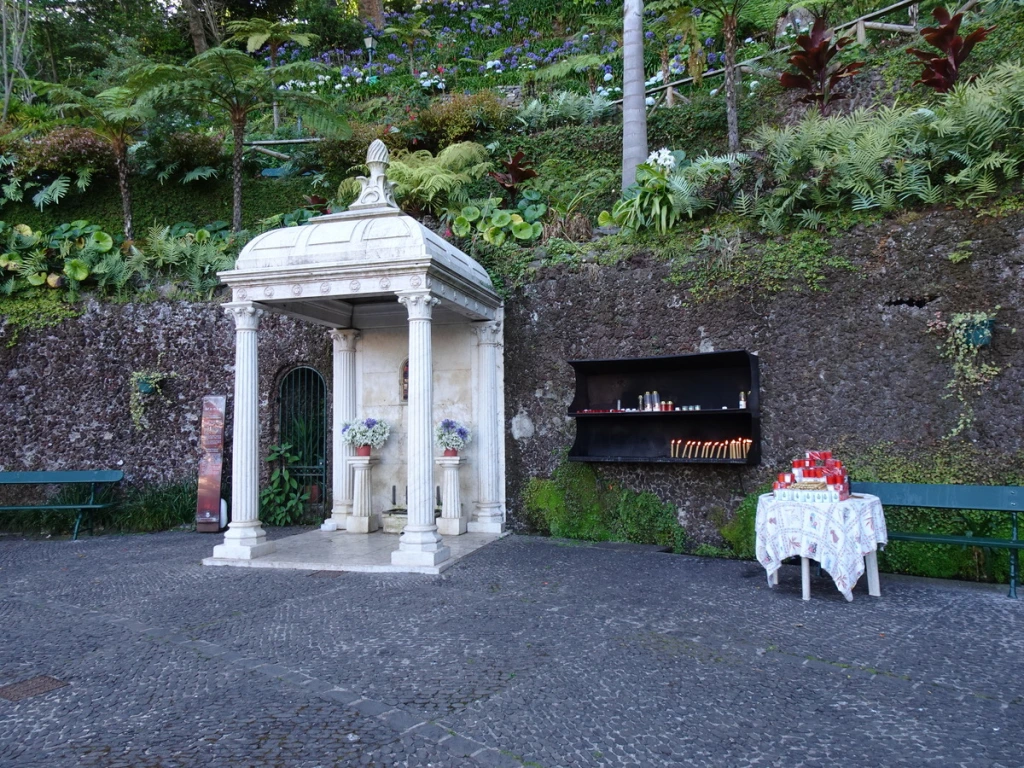
After breakfast, we caught the bus up to Monte. Alight at Parque Municipal do Monte; you’ll know it’s time to get off when the bus reaches a sharp hairpin bend in the road and you can see a well-kept, cobbled square to the right. There was a small shrine off to one side and a footpath leading to Igreja de Nossa Senhora do Monte , which is worth a peek inside on your way past.
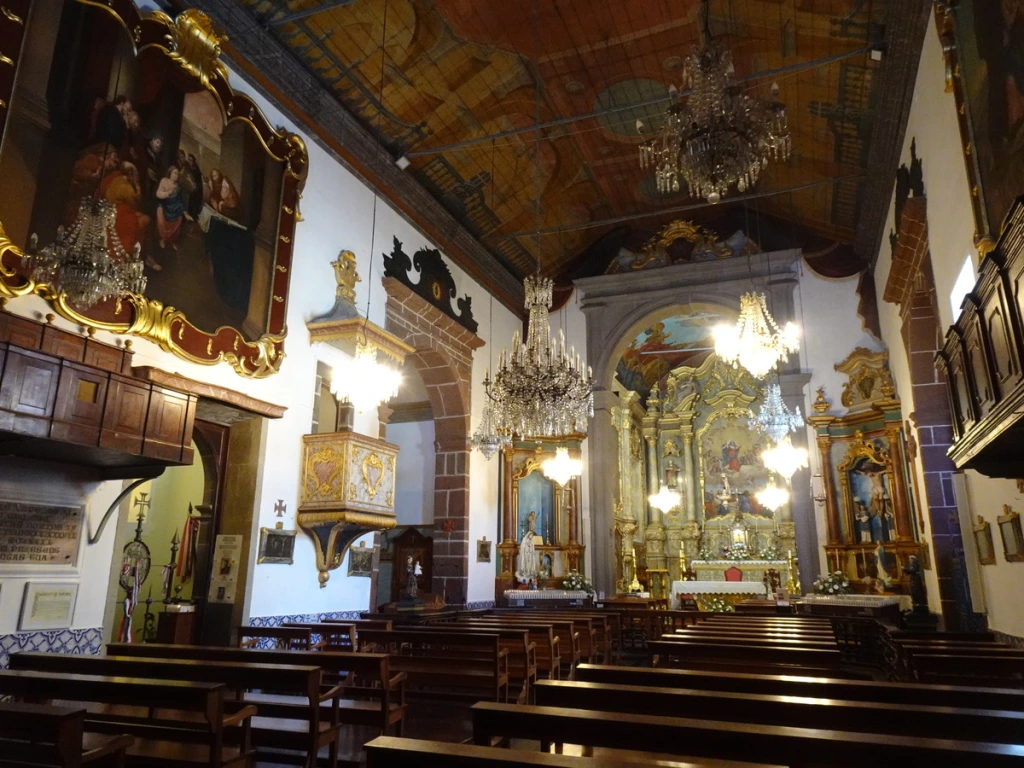
Stepping back out into the sunshine, we continued along Largo da Fonte, passing the Jardim Tropical Monte Palace and the Teleférico do Funchal. More often than not, Monte was in the clouds during our time in Madeira – so looking back, we were very fortunate with the weather on this hike!
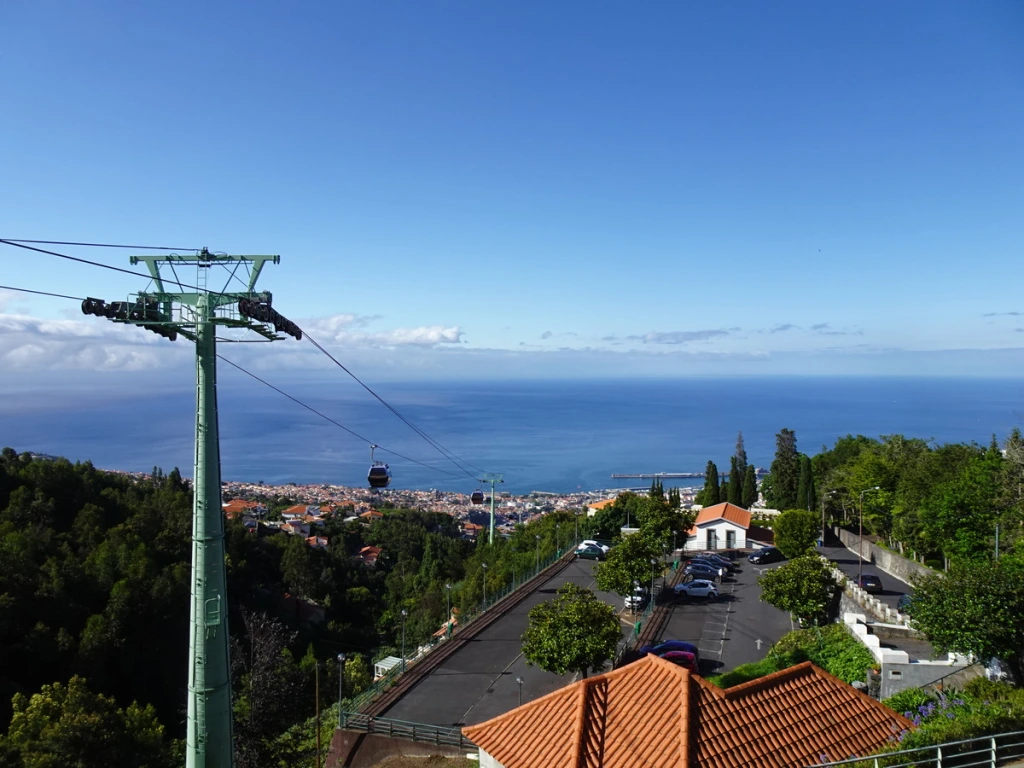
We followed Largo das Babosas downhill, dutifully looking out for the cobbled track Paddy Dillon described in Walking on Madeira.
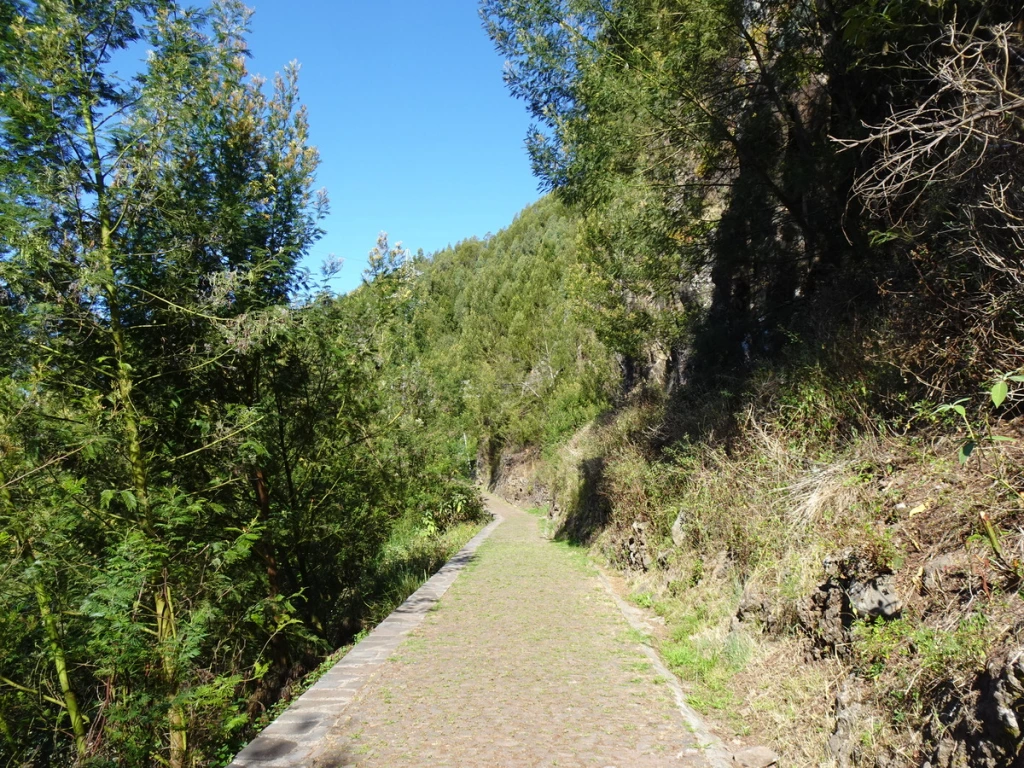
Fairly early on, there’s a choice to make: a more exposed path along the levada, or a gentler alternative. We decided to go with the former, and I can confirm it is (for a few hundred metres at least) very exposed. Not a route I would embark on if it were even drizzling, to be perfectly honest. Anyway: up we went, passing through some woodland and a lot of rather dense vegetation.
Fortunately, once you’re up, you’re up – and as soon as the levada came into view, it was a nice level path for the rest of the route.
Before long, we reached a stone arch and the ‘exposed’ descriptor quickly became apparent.
The levada (and very narrow adjacent path) snaked around the edge of a pretty steep hillside with, for the most part, very little between you and a sheer drop to the bottom of the valley.
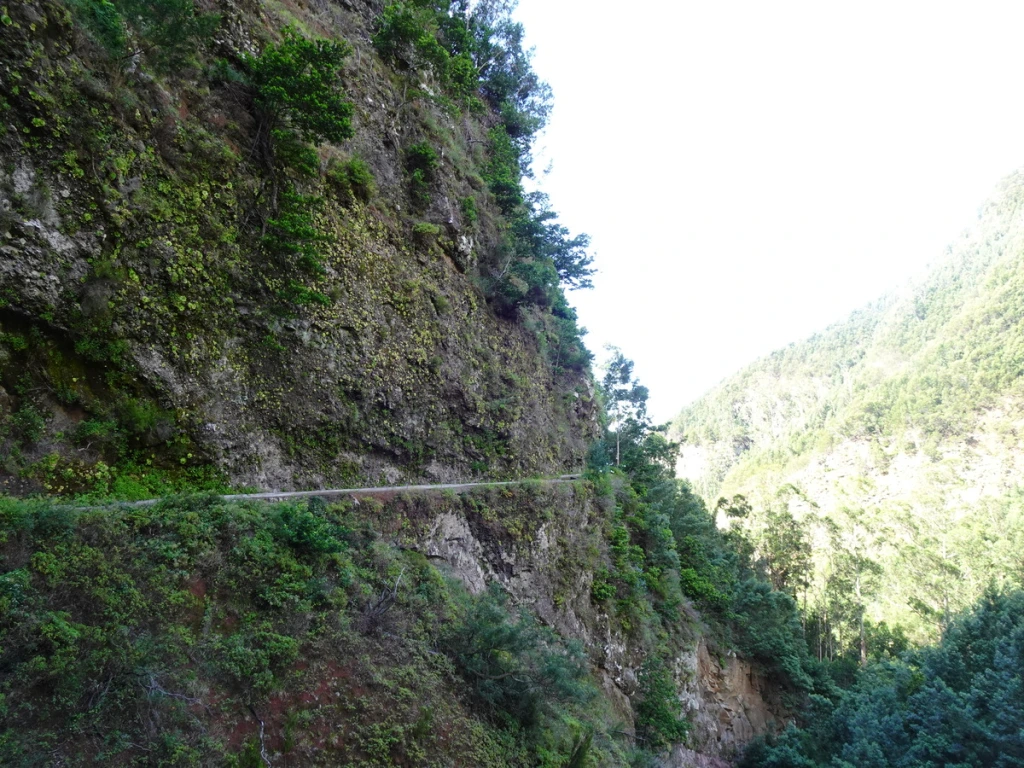
At this point, we spotted two people shuffling along in the levada. (This is something that signs tell you explicitly not to do, as the levadas supply water to the villages and towns around the island, so we could only assume the combination of a very narrow path and a steep drop to the side had got the better of them.) We decided to wait for them to pass us, rather than set out towards them, as there was more space where we were. We had a brief chat with them, and then continued towards Camacha.
Levada dos Tornos deposited us in a small village, disappearing beneath the ground for a short stretch. Fortunately, it was well-signposted and it wasn’t long before we were back alongside the levada.
The next stretch of Levada dos Tornos was gentler, the exposed cliffside replaced by an abundance of ferns and flowers.
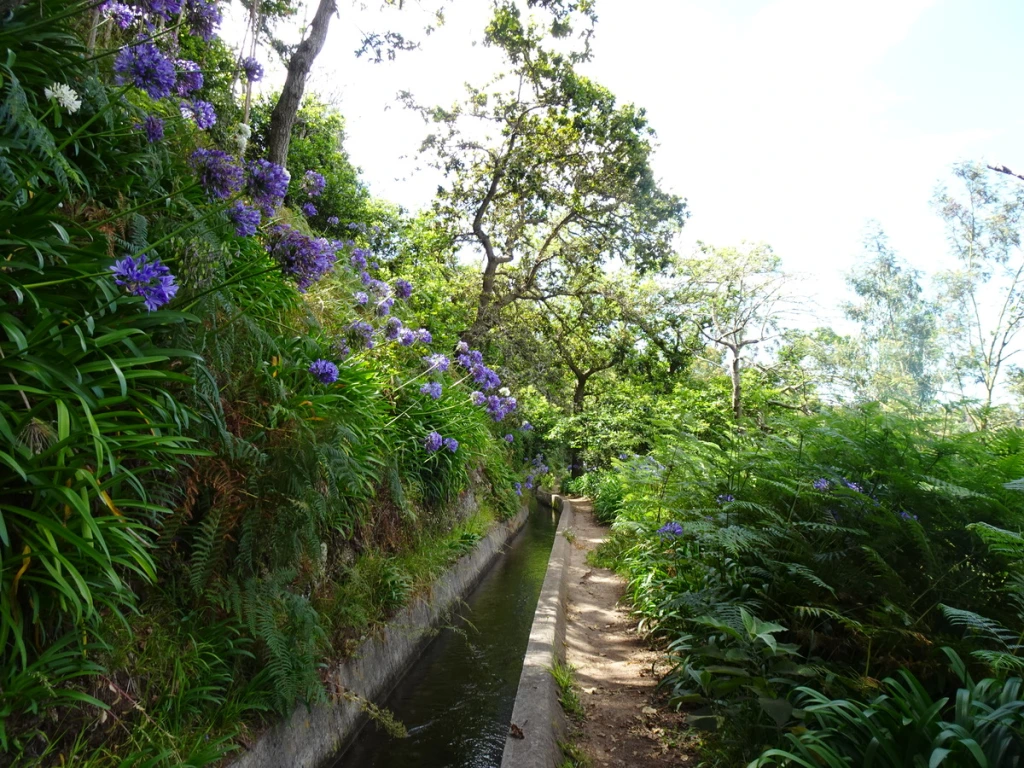
Further along, the levada led us through woodland – following a forest fire a few years ago, this is now mostly eucalyptus.
We then stopped off for drinks (and a slice of orange cake) at Hortensia Gardens. We were even given a few homegrown plums, which was a nice treat. (A little further along Levada dos Tornos is Jasmin Tea House, but that was unexpectedly closed that day – so it was just as well we had stopped at the first available café!)
We both agreed that this route peaked in the first 10km, in terms of scenery. That said, we did spot a few cats snoozing on the path between Hortensia Gardens and Camacha, so all was not lost.
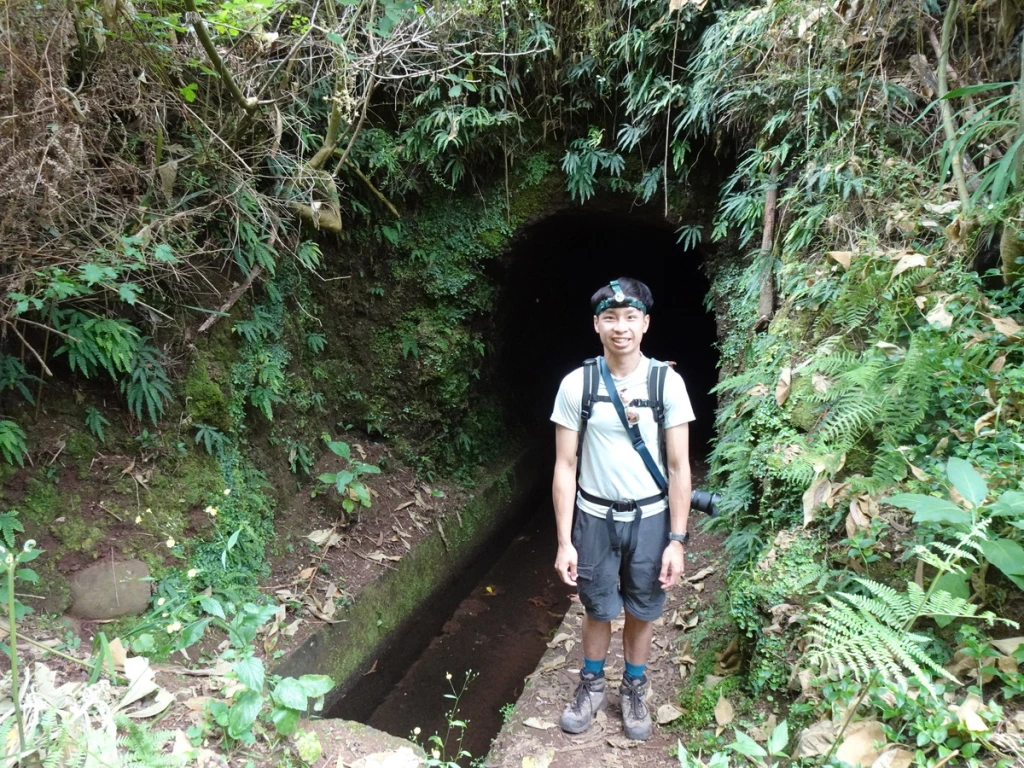
Towards the end of this leg of Levada dos Tornos, there’s a tunnel (above) that you can either go through or go over. We opted to go through it, though I quickly discovered that the torch on my phone was far more effective than the torch I had brought with me. We were able to walk through standing up, but taller people might need to stoop.
We had a bit of time before the next bus back to Funchal, so once we’d established where the bus would be leaving from, we headed off in search of an ice-cold Coke.